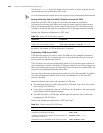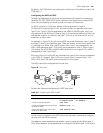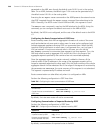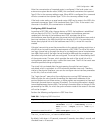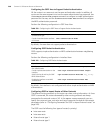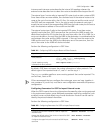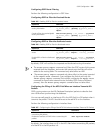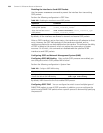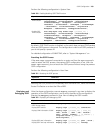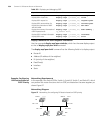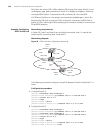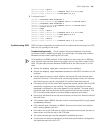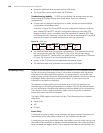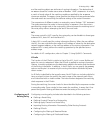
252 CHAPTER 16: IP ROUTING PROTOCOL OPERATION
Disabling the Interface to Send OSPF Packets
Use the
silent-interface command to prevent the interface from transmitting
OSPF packets.
Perform the following configuration in OSPF View.
By default, all the interfaces are allowed to transmit and receive OSPF packets.
After an OSPF interface is set to silent status, the interface can still advertise its direct
route. However, the OSPF hello packets of the interface are blocked, and no
neighboring relationship can be established on the interface. This enhances the ability
of OSPF to adapt to the network, which can reduce the consumption of system
resources. On a Switch, this command can disable/enable the specified VLAN
interface to send OSPF packets.
Configuring OSPF and Network Management System (NMS)
Configuring OSPF MIB binding After multiple OSPF processes are enabled, you
can configure to which OSPF process MIB is bound.
Perform the following configuration in System View.
By default, MIB is bound to the first enabled OSPF process.
Configuring OSPF TRAP You can configure the switch to send multiple types of
SNMP TRAP packets in case of OSPF anomalies. In addition, you can configure the
switch to send SNMP TRAP packets when a specific process is abnormal by specifying
the process ID.
Table 248 Disabling the interface to send OSPF packets
Operation Command
Prevent the interface from
sending OSPF packets
silent-interface silent_interface_type
silent_interface_number
Allow the interface to send
OSPF packets
undo silent-interface silent_interface_type
silent_interface_number
Table 249 Configure OSPF MIB binding
Operation Command
Configure OSPF MIB binding ospf mib-binding process_id
Restore the default OSPF MIB binding undo ospf mib-binding



